- Home
- Steam Resources
- Steam Theory
- Trap Installation Orientation
Steam Trap Considerations
Trap Installation Orientation
Steam traps must be installed in piping before use, but some piping runs horizontally and some runs vertically. Is it acceptable to install steam traps in whichever of the two types of piping one wishes?
The truth is there are some kinds of traps that have very few restrictions on installation orientation, while there are others that have strict limitations.
The rationale behind having restrictions on installation orientation
Installation orientation restrictions for a steam trap have to do with both the trap’s construction and its operation principal.
‘Mechanical types,’ whose operation relies on the forces of buoyancy and gravity, have relatively strict rules regarding their installation orientation. If the installation orientation for these types is not correct, the proper balance between buoyancy and gravity cannot be achieved and the valve mechanism can no longer function as it should, which means that the trap cannot do its job.
Types in which gravity has no effect on operation, for example types whose operation principal relies on a phase change from steam to water or parts whose shape changes, have relatively few restrictions.
Common Trap Installation Orientations
Types with severe restrictions, clearly divided into use for either vertical or horizontal piping
Mechanical types such as bucket or float come in two types, one for vertical piping and one for horizontal. Each type may only be used in its specified orientation.
Even if we install on horizontal piping, the trap should not be installed upside down or sideways.
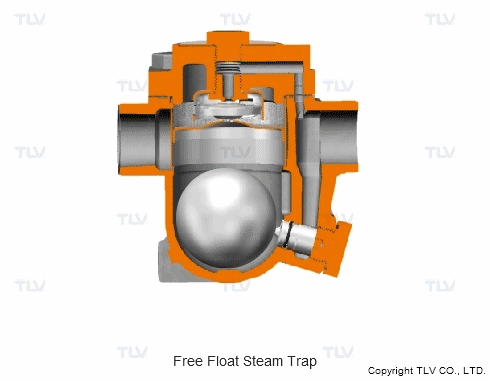
Types with relatively lax restrictions
There are many thermostatic and disc types that may be used on both vertical and horizontal piping. In particular, disc types are known for being able to be used on both vertical and horizontal piping with no problems.
However even if we install on horizontal piping, we should avoid installing the trap upside down.
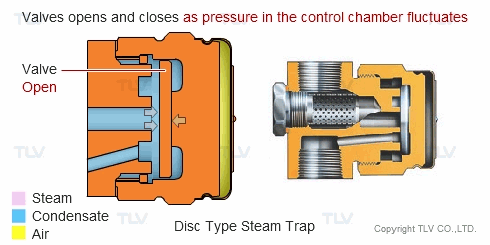
Thermostatic types have a special condition to watch for.
Depending on the installation orientation, the condensate inside the trap may not be level. This operation of this type of trap is based on temperature differences, so unevenness in temperature at the temperature-sensitive part has an adverse effect on operation.
Thermo liquid type and Bimetal type have the same principles for installation orientation.
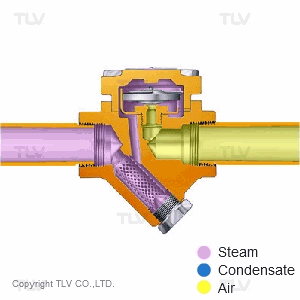
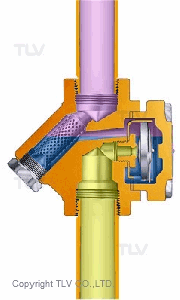
Thermostatic Steam Trap
When installed in horizontal piping, the X-element is located higher than the piping, so condensate fills the piping and the trap before it reaches the X-element. This causes clearly distinct intermittent operation. When installed in vertical piping, condensate is in continuous contact with the X-element, causing the lower portion of the X-element to be continually surrounded by condensate while the upper portion is continually surrounded by steam. The X-element is therefore forced to operate based on the ‘average temperature,’ making clearly distinct intermittent operation nearly impossible and causing a tendency for unstable operation.
However even if we install on horizontal piping, we should avoid installing the trap upside down.
Even among traps whose construction and mechanisms are not effected by gravity, there are some cases in which installation orientation has an effect on operation.
Exception
There is a product in which the trapping mechanism is connected to the installation point on the piping by a specialized flange.
At TLV this is known as the ‘Quick Trap Series.’ Regardless of the piping configuration, you simply adjust the specialized flange that connects the trap to the piping in order to maintain the correct trap position.
However, even the Quick Trap Series has a proper installation orientation for the trap unit. The trap should be positioned with the top and bottom in the correct orientation, while the connector unit can be installed in any orientation.
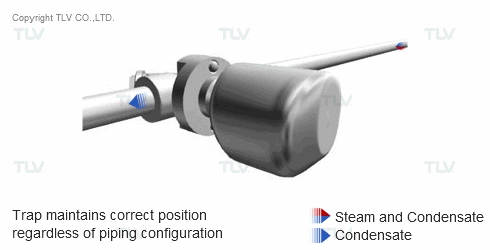
Check the Instruction Manual
This tutorial is just a general overview. Be sure to refer to the correct product instruction manual prior to actual trap installation.

